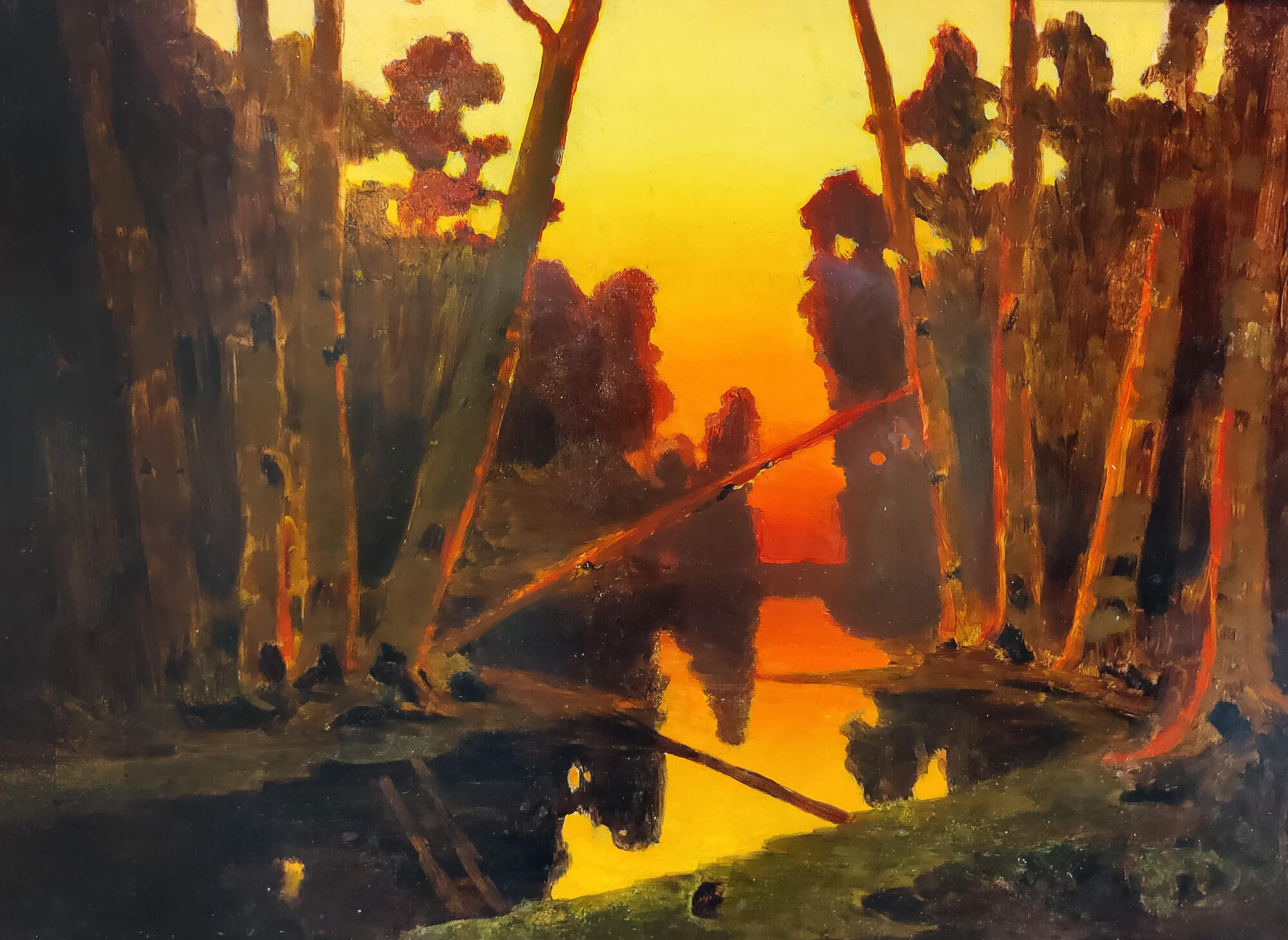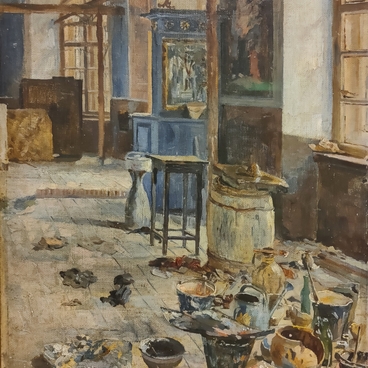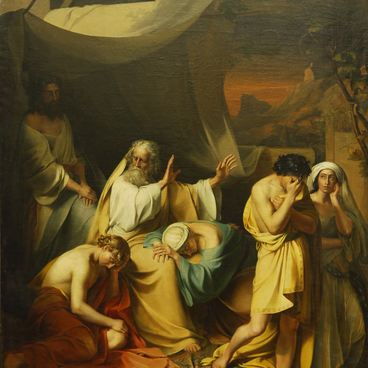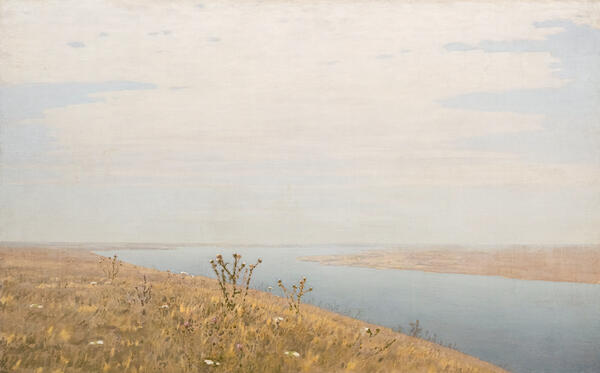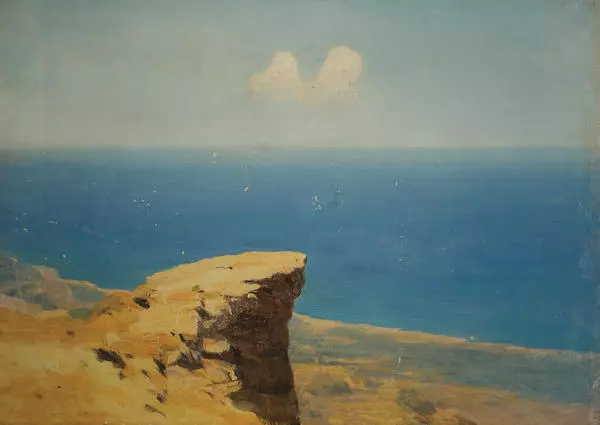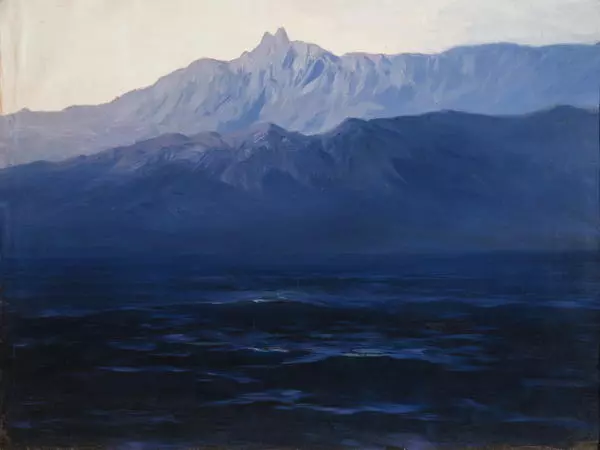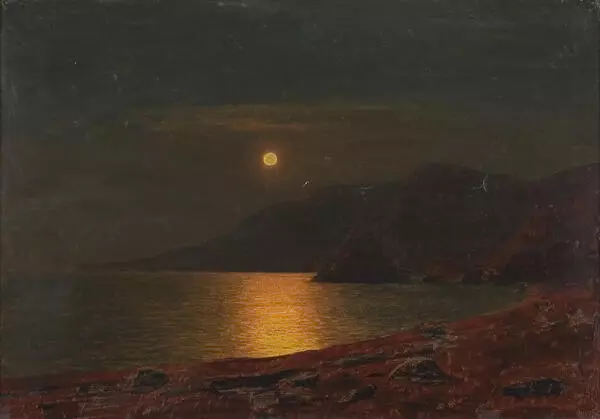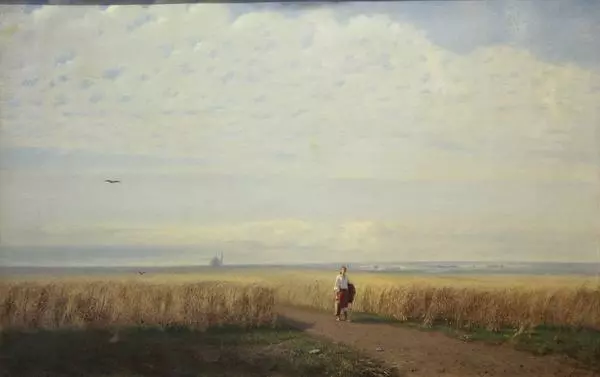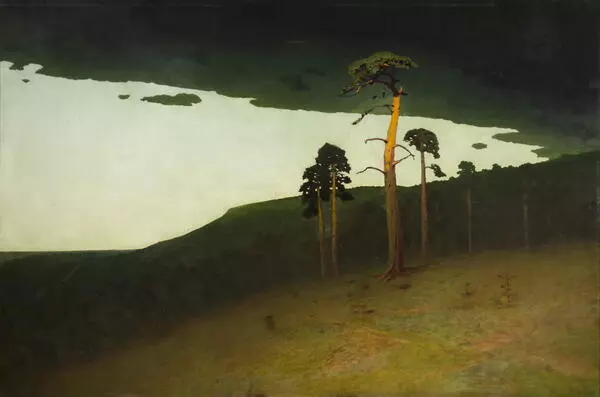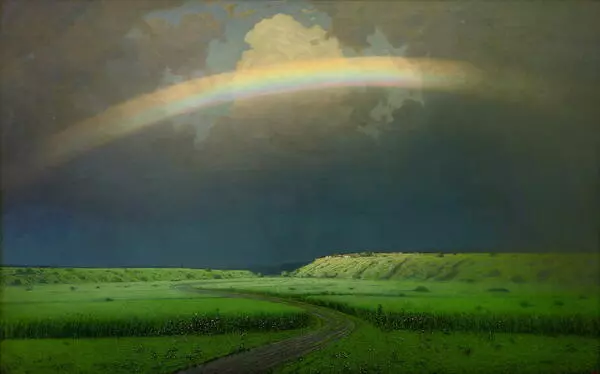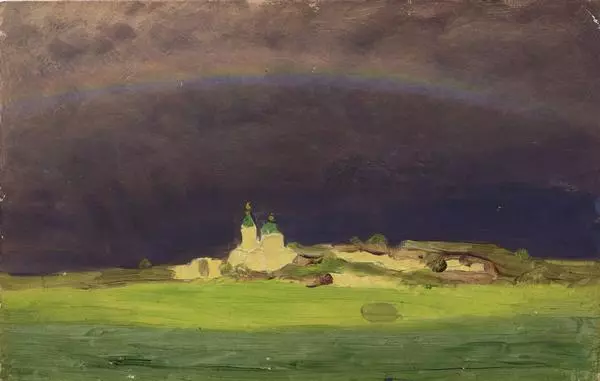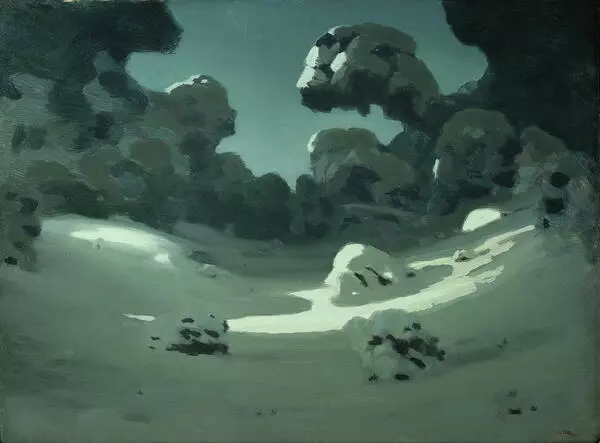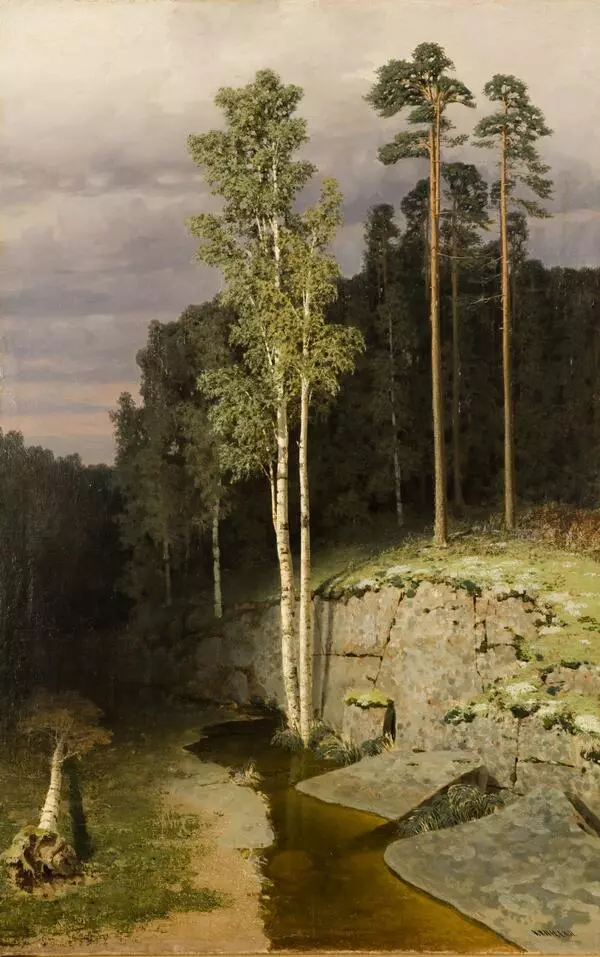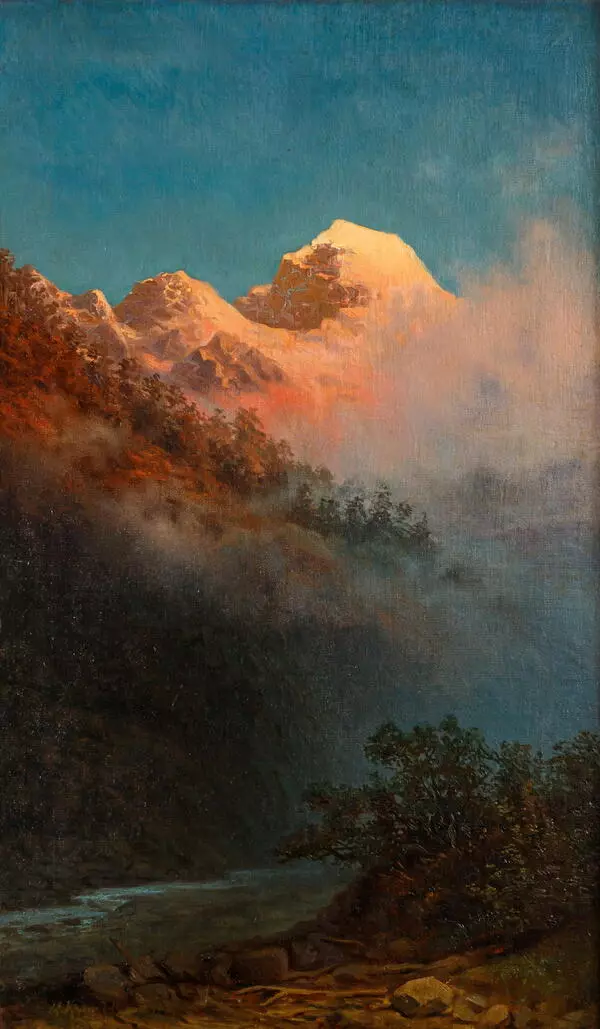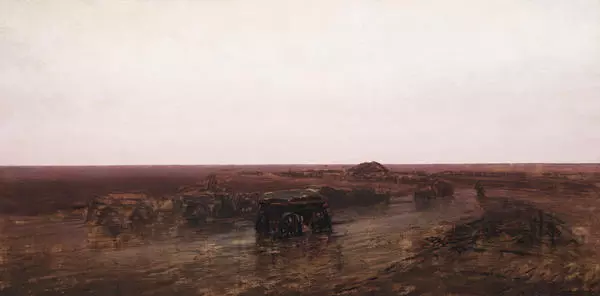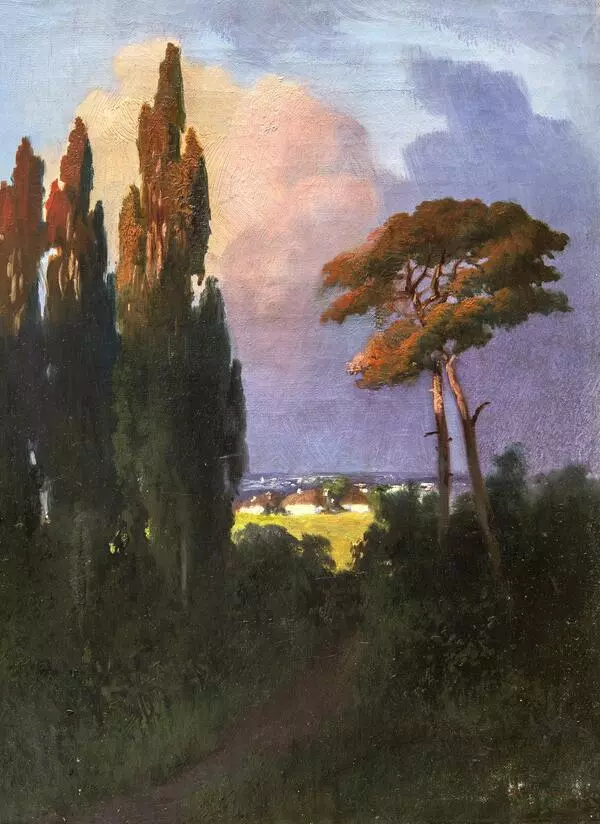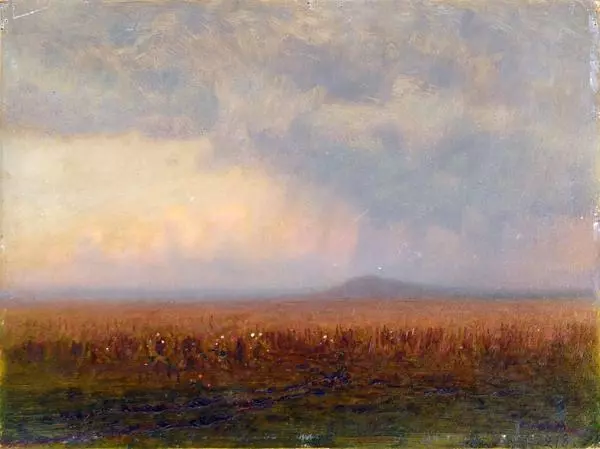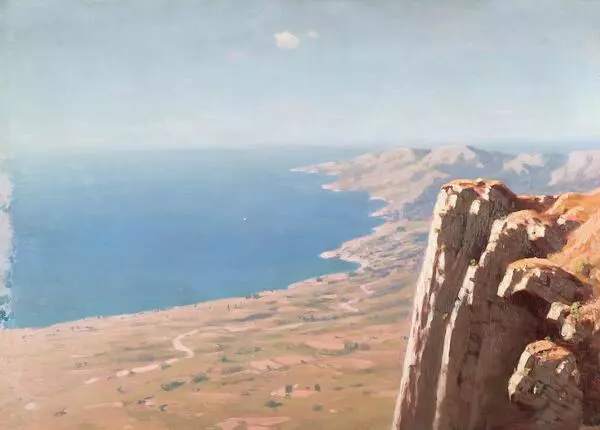Arkhip Kuindzhi painted ‘Sunset in the forest, ” in the final decade of the 19th century. He painted this sketch with oil on cardboard. It is one of the many works the artist had never finished. The artist portrayed a birch grove and a stream during sunset. The red sun illuminates the water and trees, and covers them in bright orange-yellow tones. Despite the rough sketch, the artist surprisingly showed accurate reflections of the sunset’s rays off the trunks of the birch trees. Soft and very realistic light, as if it were breaking through the haze — a typical trademark of Kuindzhi’s paintings.
Contemporaries believe Arkhip Kuindzhi to be an unparalleled artist when it comes to lighting effects. He knew how to convey the behavior of light in the atmosphere so well that when people came to his exhibitions, they sometimes looked for additional lamps behind the paintings.
The famous American art critic John Bowlt called Arkhip Kuindzhi the “Russian luminist.” He praised his work on the Red Sunset on the Dnieper, for emphasizing the features of the creative method which compared Kuindzhi to the artists of the Hudson River School: bright contorted light, strong horizontals and panoramas.
Arkhip Kuindzhi’s creative research was very much in line with scientific research. He was friends with the chemist Dmitri Mendeleev and the physicist Fyodor Petrushevskiy. The artist worked together with the scientists and tried to improve the composition of paints and to find a way to enhance the illusion of light. Accompanied by Dmitri Mendeleev, the artist conducted chemical experiments numerous times. Many sources claim that the artist even mixed bitumen into paints.
Arkhip Kuindzhi was especially interested in optical effects. Kuindzhi’s friend Petrushevskiy, the physicist, researched the field aimed at representing the color of light in an image. The artist and the scientist were so curious that they checked how the perception of one color changes depending on the tones adjacent to it. The artist knew very well that some colors, painted next to each other — for example, red and green — considerably increased the intensity of one another. And small dark strokes within the highlighted areas of the painting could create an illusion of light vibration. Researchers have said that in Arkhip Kuindzhi’s conversations with his students, he would sometimes dissert upon detailed scientific analysis, cited data from physics, checked lighting effects and explored the laws of reflection.
Ilya Repin called Kuindzhi an artist of unparalleled originality and placed his name in a class with geniuses. The artist’s works are kept in many museums throughout the world and hold tremendous value.
Contemporaries believe Arkhip Kuindzhi to be an unparalleled artist when it comes to lighting effects. He knew how to convey the behavior of light in the atmosphere so well that when people came to his exhibitions, they sometimes looked for additional lamps behind the paintings.
The famous American art critic John Bowlt called Arkhip Kuindzhi the “Russian luminist.” He praised his work on the Red Sunset on the Dnieper, for emphasizing the features of the creative method which compared Kuindzhi to the artists of the Hudson River School: bright contorted light, strong horizontals and panoramas.
Arkhip Kuindzhi’s creative research was very much in line with scientific research. He was friends with the chemist Dmitri Mendeleev and the physicist Fyodor Petrushevskiy. The artist worked together with the scientists and tried to improve the composition of paints and to find a way to enhance the illusion of light. Accompanied by Dmitri Mendeleev, the artist conducted chemical experiments numerous times. Many sources claim that the artist even mixed bitumen into paints.
Arkhip Kuindzhi was especially interested in optical effects. Kuindzhi’s friend Petrushevskiy, the physicist, researched the field aimed at representing the color of light in an image. The artist and the scientist were so curious that they checked how the perception of one color changes depending on the tones adjacent to it. The artist knew very well that some colors, painted next to each other — for example, red and green — considerably increased the intensity of one another. And small dark strokes within the highlighted areas of the painting could create an illusion of light vibration. Researchers have said that in Arkhip Kuindzhi’s conversations with his students, he would sometimes dissert upon detailed scientific analysis, cited data from physics, checked lighting effects and explored the laws of reflection.
Ilya Repin called Kuindzhi an artist of unparalleled originality and placed his name in a class with geniuses. The artist’s works are kept in many museums throughout the world and hold tremendous value.
